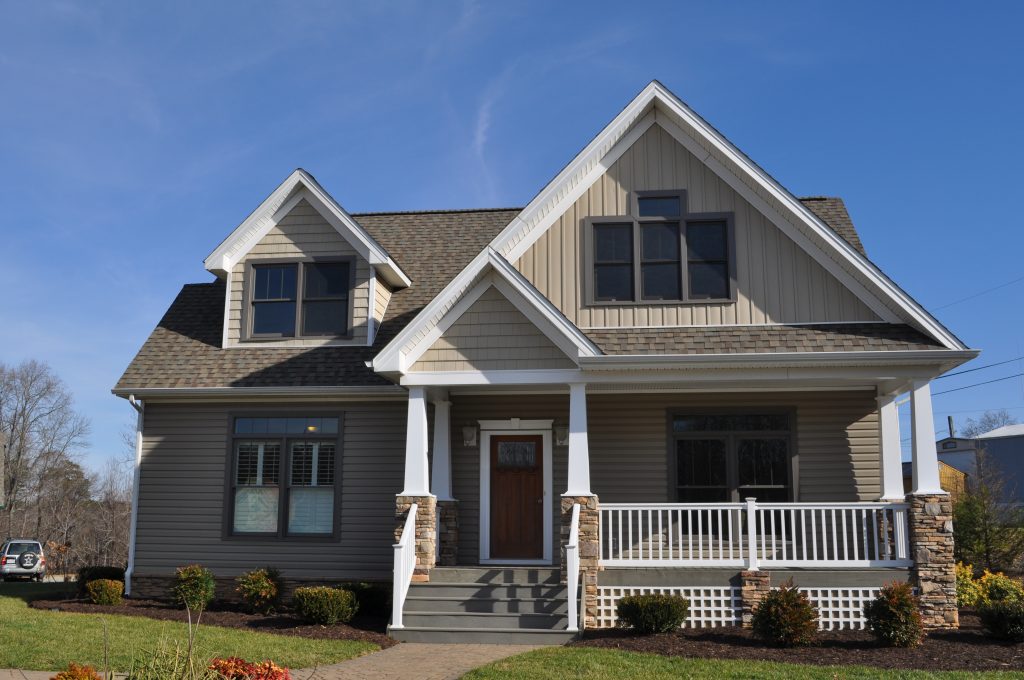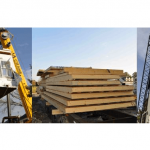Why Buying a New Home is Better than Fixing Up an Older Home


Everyone has their own thoughts on moving into a home that is new to them. Some people like the feeling of history and enjoy the character that an older home can offer. Others love modern floor plans with open floor space and new materials to make them feel safe and comfortable. There are pro’s and con’s for both sides of the debate as to which one is best: a used home or a new home. For example, new homes tend to offer a safer living environment because you know there isn’t any lead paint, asbestos, or mold behind the walls. However, on the other side of the coin, an older home tends to be found in neighborhoods with mature trees, established neighbors, and they can have a “cozier” feeling.
The Reasons Why Many Choose to Build a New Home
Design Your Home and Choose Your Colors – Why settle for someone else’s color choices? With new construction you get to pick everything from flooring, to countertop and cabinet colors. You can choose bathroom finishes and lighting and even faucets and sink styles.
Create Your Own Floor Plan – When you choose to build a new custom home, you can even pick your exact floor plan and customize it to meet your individual or family needs. You choose the exact locations of cabinets, islands, size of hallways, and locations for bathrooms. You can create dramatic staircases and casual living spaces. You can have the cozy breakfast nook you have always wanted and even that wrap around porch that you have dreamed about!
It Comes With a Warranty – In most states the builder in required to offer a 1 year warranty on the home. In some states, that may even be 10 years. In any case, new homes offer the peace of mind that you have all new items and if something breaks, there is a good chance it falls under the coverage of a warranty. It won’t be an out-of-pocket expense that you don’t need to deal with as you furnish your new home.
More Energy Efficient – Today, homes are far more energy efficient than a home that was built even just 10 years ago. Construction technology has made tremendous gains in the last several years. Areas such as windows, doors, sealants, insulation, heating and cooling systems, shingles, etc. are all made to contribute to reduced energy usage. In addition, by managing the homes interior environment, the home is just more comfortable to live in.
Indoor Air Quality – Because of new energy codes that are in force today, homes have to be more energy efficient. While this can save money on energy bills, it makes the home much tighter (in other words, they don’t have any ventilation). Now homes must have other methods to introduce good air into the home and filter it. Combine this with much better materials and the indoor air quality is much better than an equivalent older, existing home.
RELATED: 5 SIMPLE TRUTHS ABOUT MODULAR OFF-SITE CONSTRUCTION
Low Maintenance – Because the home and all the parts and materials to build it are new, there is a much lower maintenance burden in new home ownership. In addition, other items such as decks, trim, and many other items are made from composite and longer lasting materials. There is little to no need for painting, cleaning, and replacing that is typically found with these same items in used homes.
The Used Home Option
 For many the allure of buying an existing home that is new to them is fueled from the feel of an older neighborhood. It’s hard to duplicate the tree lined street with white painted fences and large porches. However, it’s what’s behind the porch that make the difference between buying a new home versus buying a used home.
For many the allure of buying an existing home that is new to them is fueled from the feel of an older neighborhood. It’s hard to duplicate the tree lined street with white painted fences and large porches. However, it’s what’s behind the porch that make the difference between buying a new home versus buying a used home.
Price – An existing home can cost less than a new home. In some areas a used home can cost 10% less than new construction.
Timeframe to Move-in – Because the home already exists, the timeframe to move in can be reduced as compared to a newly constructed custom home. The timeframe to move in can be as little as the wait to schedule a home settlement and arrange for the moving company to pack your belongings.
However, existing homes present their own set of “opportunities” for the home buyer. Each home buyer has to determine what is best for their needs, their wants, and their budget.
Renovations – Depending on the home’s age you will have to consider the cost of renovations and repairs. It may be replacing outdated cabinets, countertops, or flooring. All of these are higher cost items and can add up quickly when comparing a new home to purchasing an existing home. If you are doing a kitchen or bathroom renovation, these are more expensive projects and the costs add up even more quickly. Just watch an episode of the Property Brothers on HGTV to learn about the hidden costs of renovation.
Used Appliances/Items – Whether it’s replacing appliances or getting new high-ticket items like the air conditioner compressor, a water heater, or a furnace or roof, there are many items that have seen the majority of their useful life exhausted and that may need replacement soon. There is no warranty. It is not only the additional cost of having them replaced but the impact on your life and schedule to coordinate with servicemen or contractors to do the work.
Air quality – With existing homes, depending on the age, materials that were used for construction could now be considered dangerous. Lead paint and asbestos flooring can be prevalent in homes built in the middle of the century and before. Leaks that haven’t been found can cause unseen water infiltration which can lead to mold issues in walls and ceilings. Air quality has become an important topic for many couples with smaller children.
Landscaping – While mature trees are nice, over-grown shrubs aren’t. Don’t forget the expense that may be incurred when updating the landscaping of a used home to better fit with your taste and to make the yard more usable for your family.
Dated floor plans – Older homes tend of have more chopped up floor plans. The trend today is towards more open floor plans that create a light, airy space. Open floor plans tend to promote sharing of time and events with family. With more defined rooms creating more hallways, older homes tend to waste space that is now used with modern home plans.
While existing homes will continue to be in demand, new construction offers so many advantages over used homes. If you’re interested in new construction, read about modular homes, the steps to building a custom home, and tips for building a custom home.
The post Why Buying a New Home is Better than Fixing Up an Older Home appeared first on Impresa Modular.




